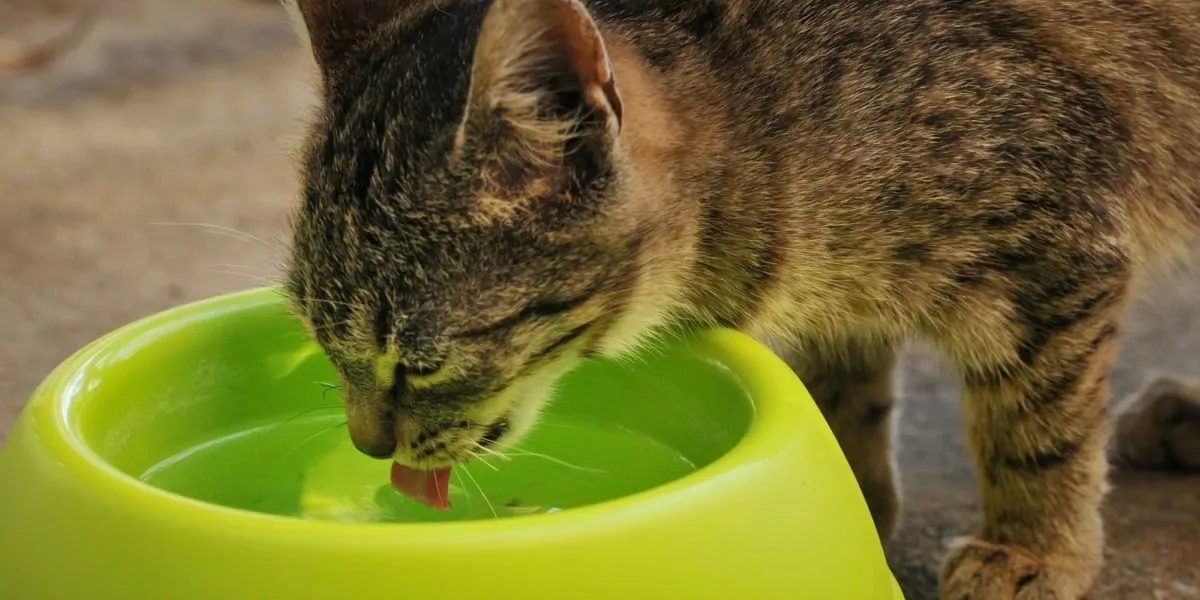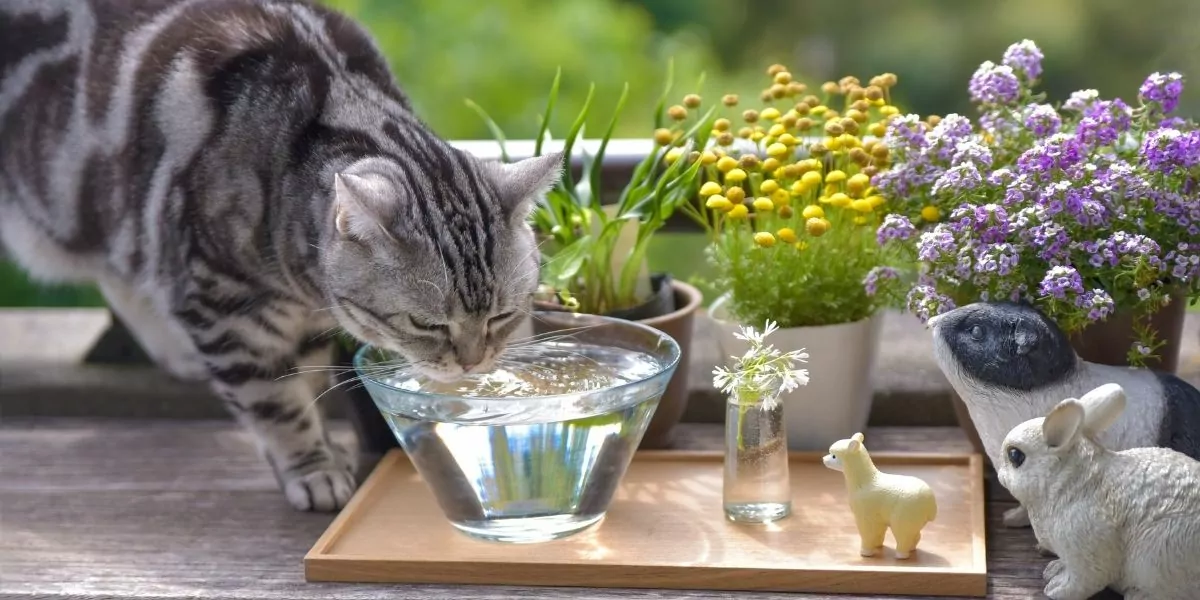Can a Cat Drink Too Much Water?
“Can a cat drink too much water?”, you ask. The answer is yes, there is such a thing as a cat drinking a lot of water. Often this is due to an underlying problem that affects its body-fluid balance.
We have compiled a list of the best cat bowls for new cat owners, so you can decide easier which one to get.

The Common Causes of a Cat Drinking Excessive Water
- Polyuria (Urinating more than usual)
- Side- effect from some medications (e.g., steroids)
- Kidney dysfunction
- Pyrexia (fever)
- Warm/hot environment
- Post-exercise (or physical activities)
- Stress
- Panting
- Hyperthyroidism
- Diabetes mellitus
- Liver disease
- Vomiting
- Diarrhea
Diagnosing Polydipsia in Cats
Monitoring how much water they drink in 24-hours can confirm polydipsia. The average fluid intake for cats is 60ml (2.02 fluid ounces) of water per kilogram/pound of body weight per day. The amount can be impacted by cats’ lifestyles and diets. However, any volume significantly higher than 60mls (2.02 fluid ounces) per kilogram/pound per day is considered polydipsia.
Blood analysis, urinalysis, and advanced imaging, such as radiography and ultrasonography, can be used to investigate the cause of polydipsia.
What Should I Do If My Cat Drinks Too Much Water?
We recommend that you get your cat assessed by a veterinarian so that they can confirm polydipsia. They also might be able to diagnose any underlying issue that might have resulted in polydipsia.

What is Regarded as a Cat Drinking Too Much Water?
As mentioned previously, cats drink an average of 60ml (2.02 fluid ounces) per kg per day, and a larger volume than that should be considered as polydipsia. Yet, it is important to consider their activities.
For example, cats that are fed a moisture-poor diet may drink more than usual but that might not be polydipsia. Also, cats with a very active lifestyle can have a higher rate of fluid loss and drink more to compensate for the fluid loss.
Generally, any volume above 100ml (3.38 fluid ounces) per kilogram/pound per day is undoubtedly polydipsia.
Even if you are unable to measure the exact amount of water that your cat is drinking, there are other telltale signs of polydipsia:
- Drinking more frequently
- The water bowl is emptying quicker than usual
- Drinking excessively to a point that causes the cat to vomit
- More frequent urination
- Urinating in larger volumes
- Drinking from unusual places (places that they do not normally drink from)
- Urinating at unusual places
When to Take Your Cat to the Vet
It is essential to take your cat to see a veterinarian as soon as you notice any unexplainable and abnormal drinking patterns. Take it to your vet if it starts drinking excessive amounts of water without a reasonable explanation such as warm weather, or a dry diet.
You can perform water intake testing (for 24-hours) at home to get a numerical value of your cat’s water intake before you take it to the vet.
How to Collect a Urine Sample from Your Cat
Your veterinarian may ask you to bring a urine sample of your cat, so they can run a urinalysis. You can collect a urine sample by either free-catching (place a small collection pot/clean container under your cat while she/he urinates) or collecting from your cat’s litter tray.
The latter approach is easier and less stressful for you and your cat. Fill your cat’s litter tray with non-absorbing substrate (e.g., hydrophobic sand-like Kit4Cat). Once your cat finishes using the litter tray, check for the urine and pour it into a collection pot or a clean container. You may find it easy to collect the urine using a pipette.
Although it will not impact the result significantly, it is best to avoid putting too much sand in the collection container if possible.
Once the sample is collected, the container’s lid should be closed and sealed to prevent any leakage. It may be a good idea to label the container with the name of your cat, the date, and time of the collection, and the name of the specimen (i.e., urine).
How to Measure Your Cat’s Water Intake
Measure the volume of water in her/his water bowl before you offer and a day (24 hours) later. This will give you the amount of water your cat has drank during the 24-hour period.
This method is difficult to execute if you have multiple animals in the same household that share the water bowl with your cat.
If your cat’s water intake must be measured, but you have a communal water bowl, you must separate your cat from others and keep it confined in a separate place for 24-hours.
However, this can lead to stress-induced behavioral changes and might not produce an accurate result. In that case, it is better to take your cat to see a veterinarian straight away instead of conducting a water intake test at home. The veterinarian can advise you on suitable diagnostic testing for your cat upon a consultation.
The Final Bark
Polydipsia in cats can be a result of many things. It is important to rule out the reason for its occurrence when your cat shows signs of polydipsia in order to establish an appropriate treatment plan.
An evaluation of water intake can be done at home by comparing the volume of water in the cat’s water bowl when water is first offered and the volume of water in the bowl 24 hours later. This will help to confirm polydipsia.
Blood analysis, urinalysis and advanced imaging are commonly used diagnostic tools to determine the causal or associative issues the animal would have.
We always recommend that you take your cat to your vet if it shows signs of having polydipsia.
